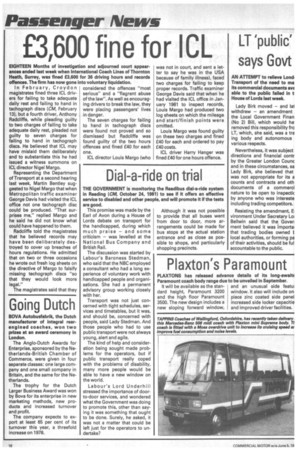Dial-a-ride on trial
Page 14

If you've noticed an error in this article please click here to report it so we can fix it.
THE GOVERNMENT is monitoring the Readibus dial-a-ride system in Reading (CM, October 24, 1981) to see if it offers an effective service to disabled and other people, and will promote it if the tests are good.
This promise was made by the Earl of Avon during a House of Lords debate on transport for the handicapped, during which much praise — and some criticism — was levelled at the National Bus Company and British Rail.
The discussion was started by Labour's Baroness Stedman, who said that the NBC employed a consultant who had a long experience of voluntary work with handicapped people and organisations. She had a permanent advisory group working closely with her.
Transport was not just concerned with tight schedules, services and timetables, but it was, and should be, concerned with people, said Lady Stedman. And those people who had to use public transport were not always young, alert and agile.
The kind of help and consideration being sought made problems for the operators, but if public transport really coped with the problems of disability, many more people would be able to have a new window on the world.
Labour's Lord Underhill stressed the importance of doorto-door services, and wondered what the Government was doing to promote this, other than saying it was something that ought to be done. Surely, he asked, it was not a matter that could be left just for the operators to undertake? Although it was not possible to provide that all buses went from door to door, more arrangements could be made for bus stops at the actual station entrance and as close as possible to shops, and particularly shopping precincts.


























































